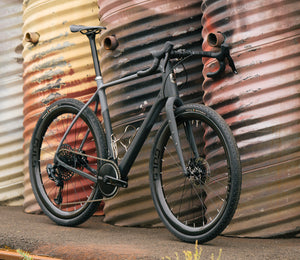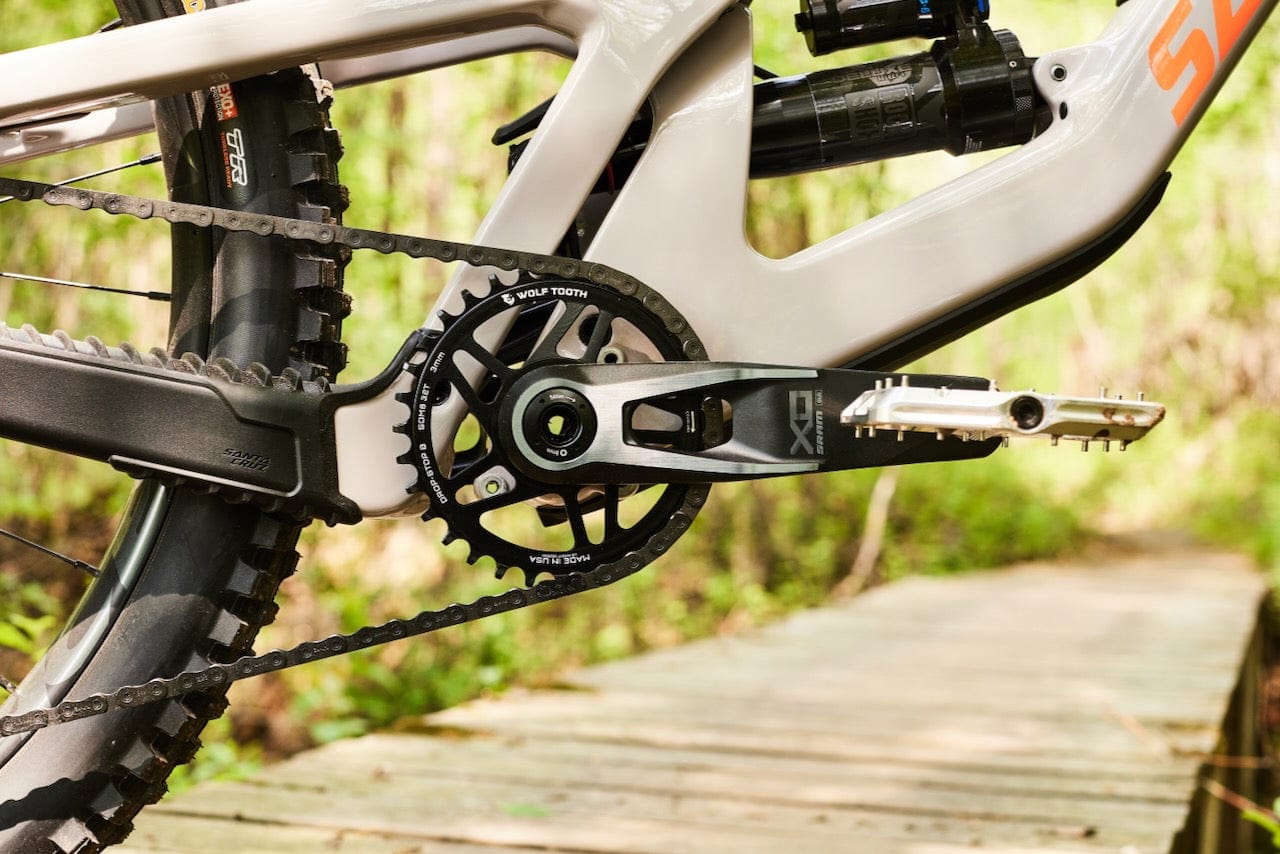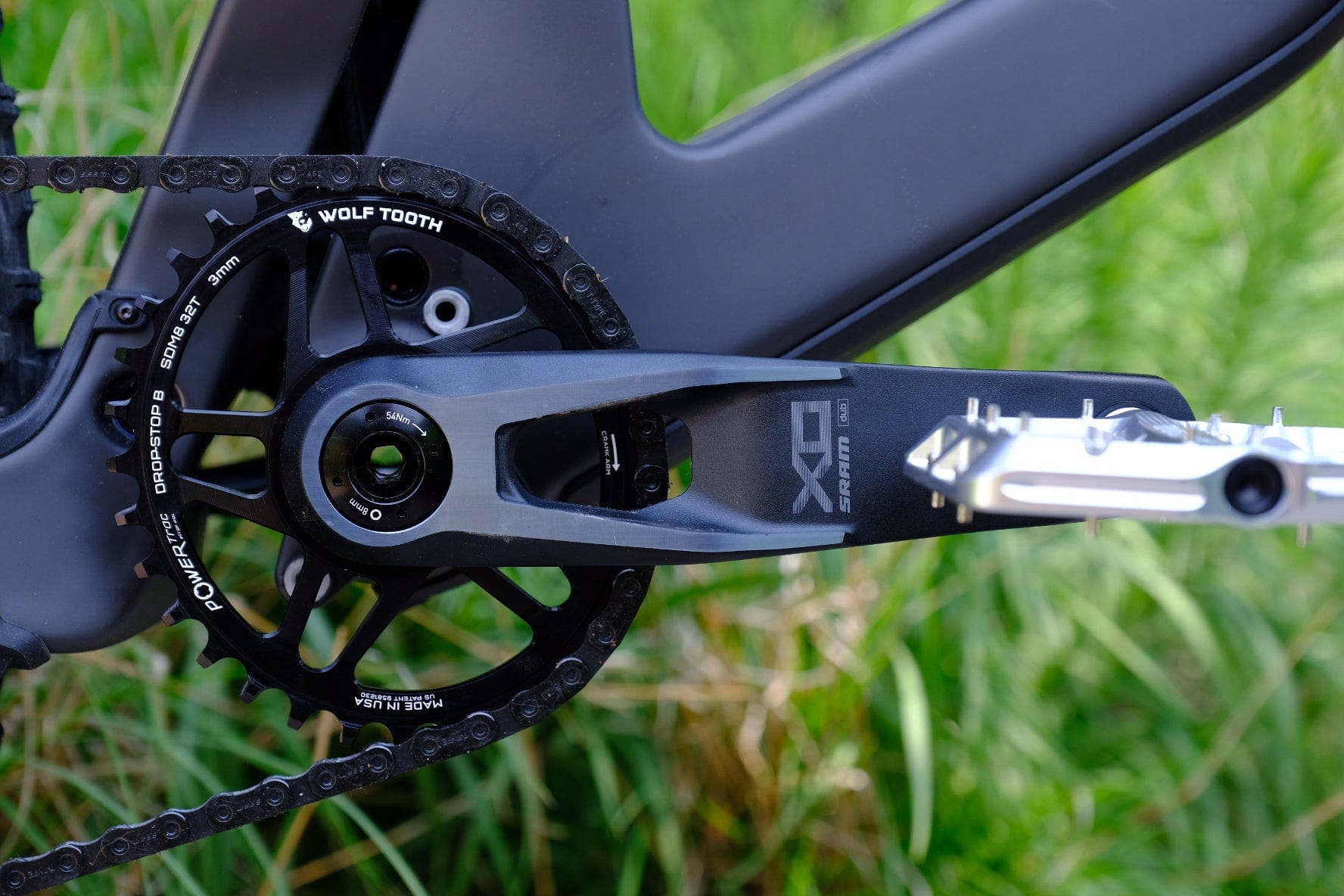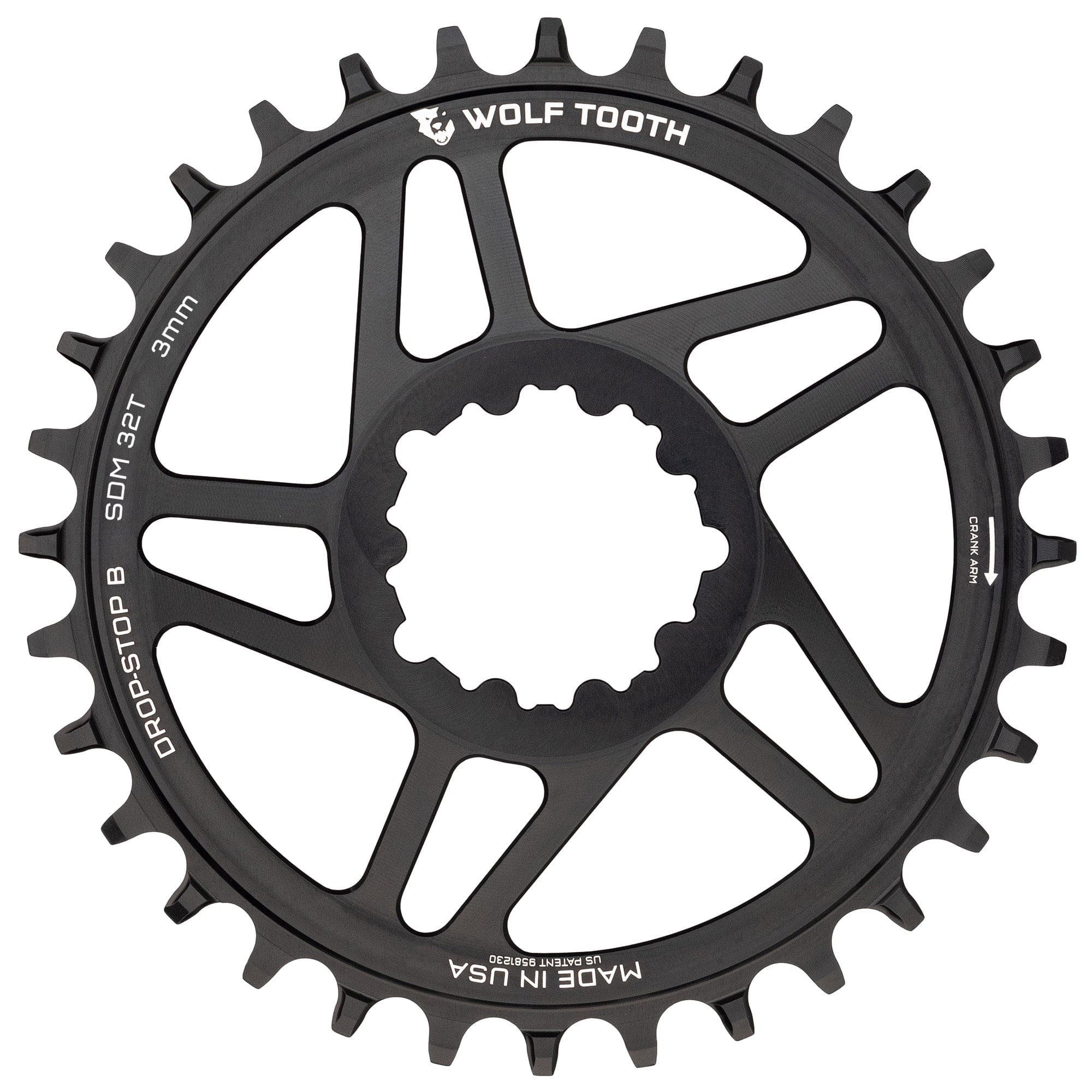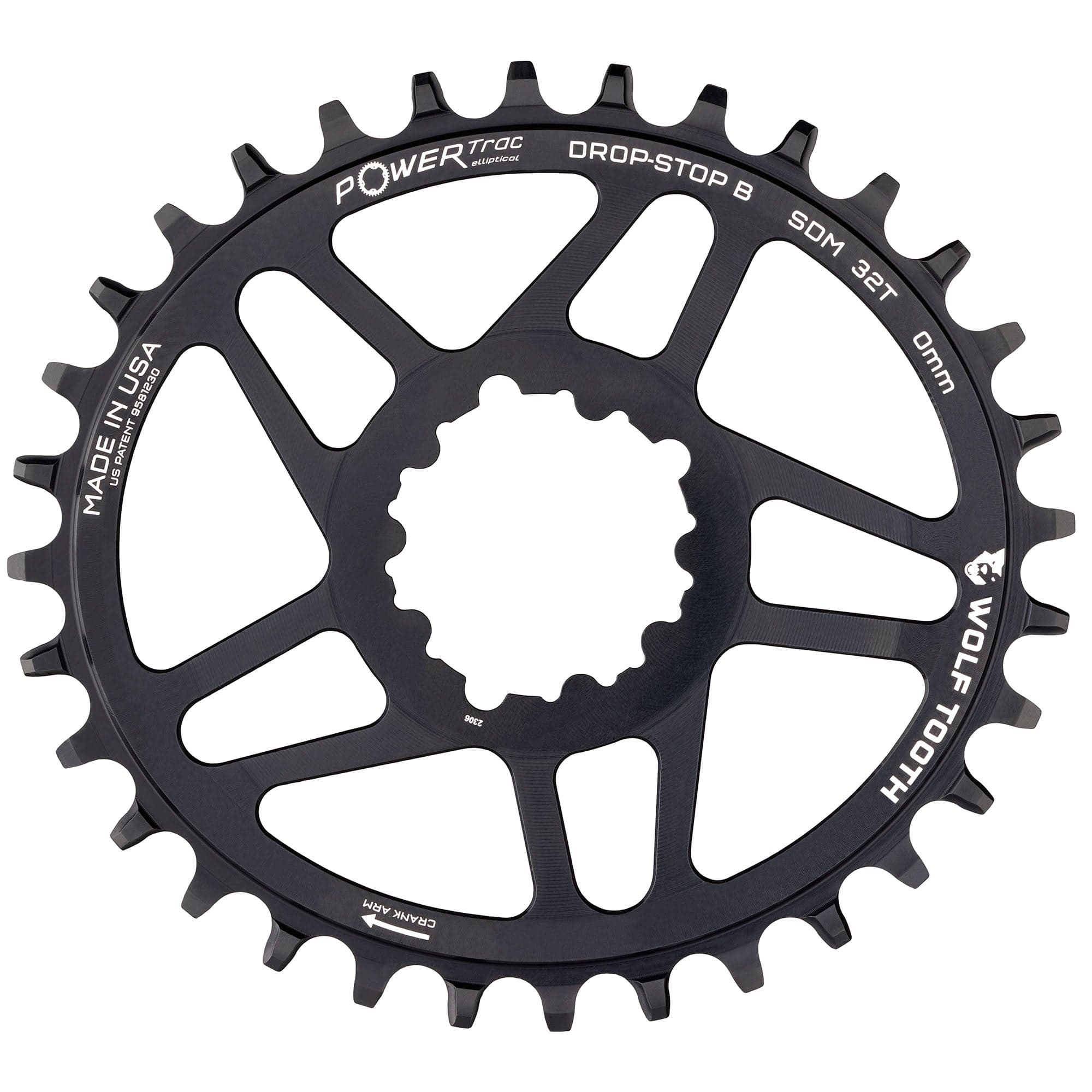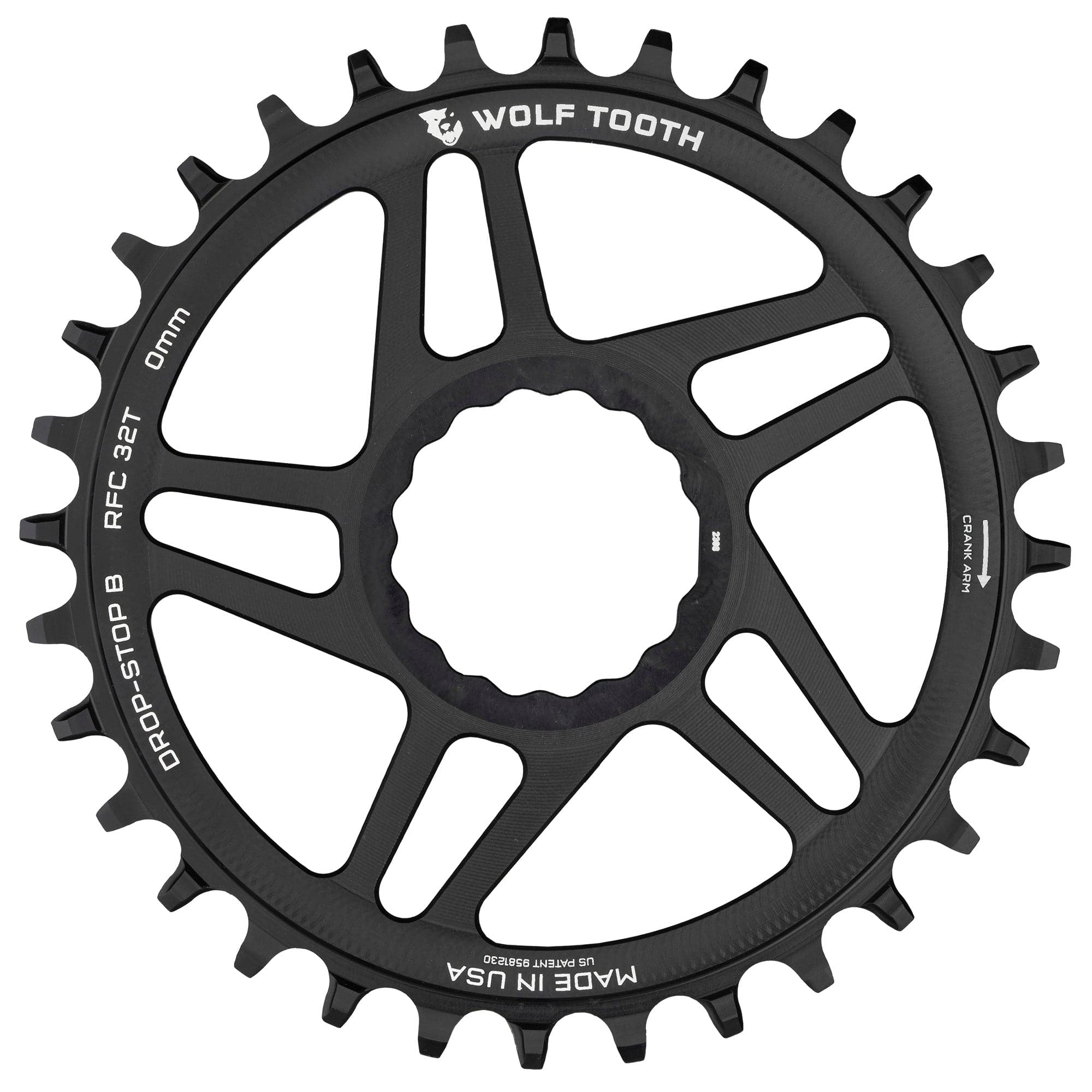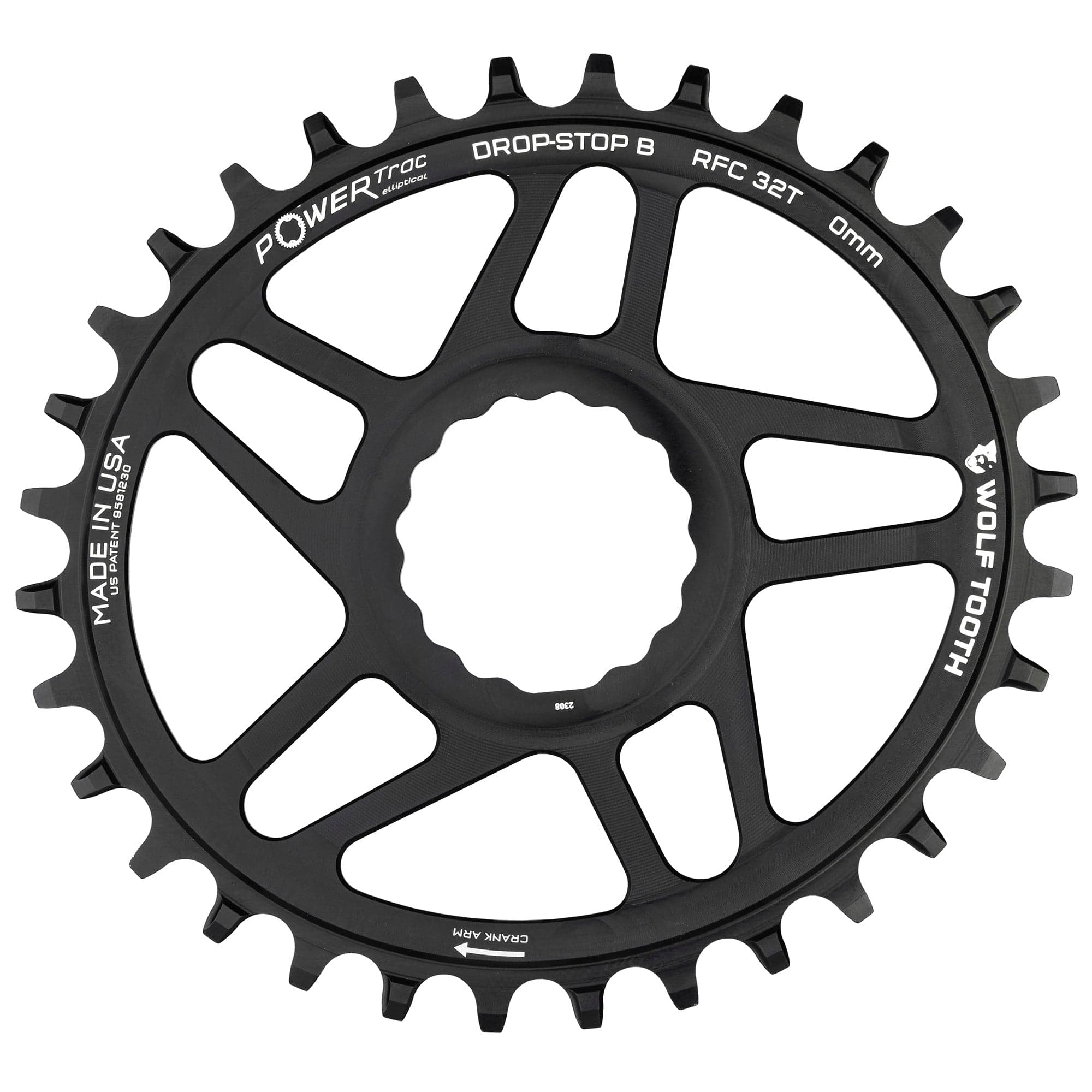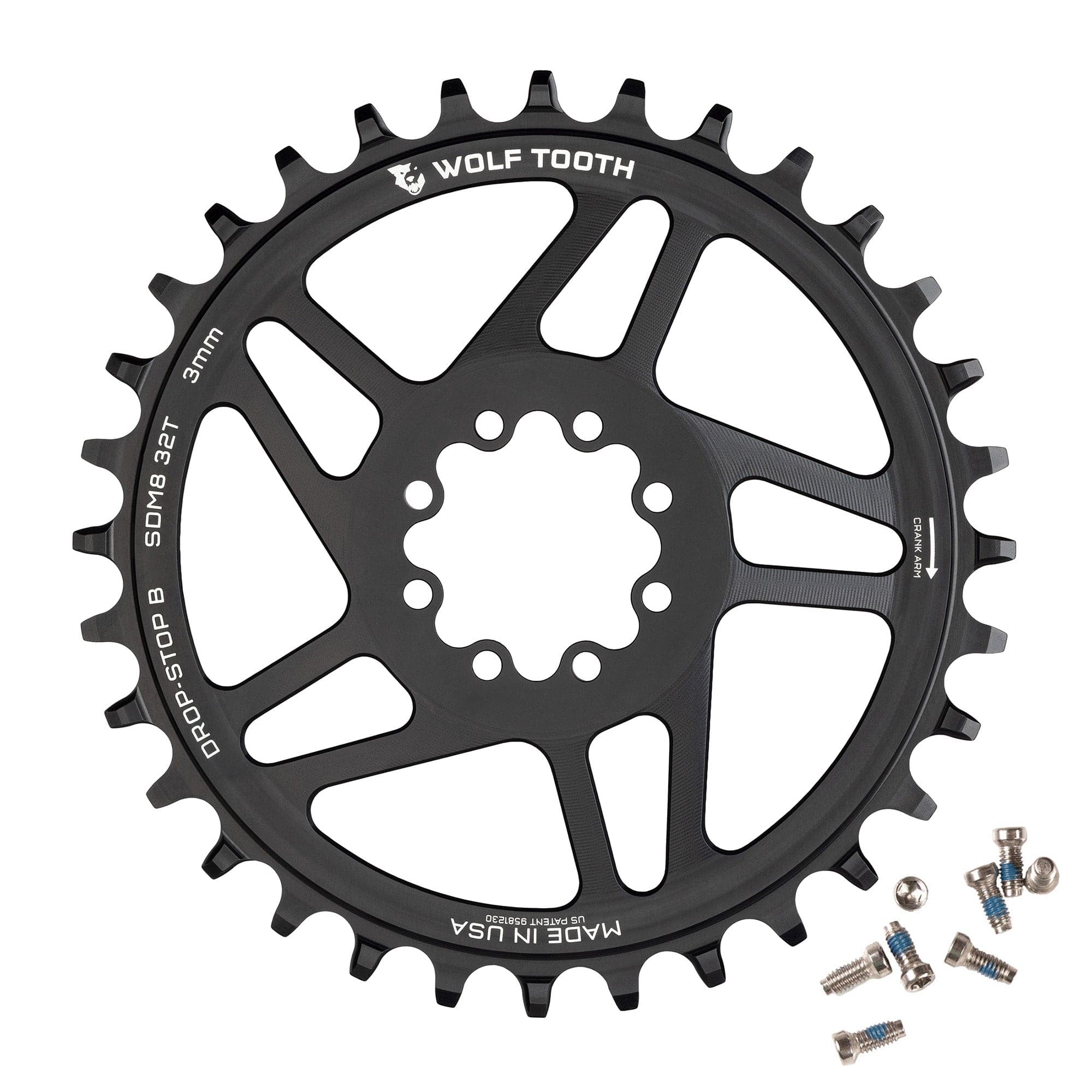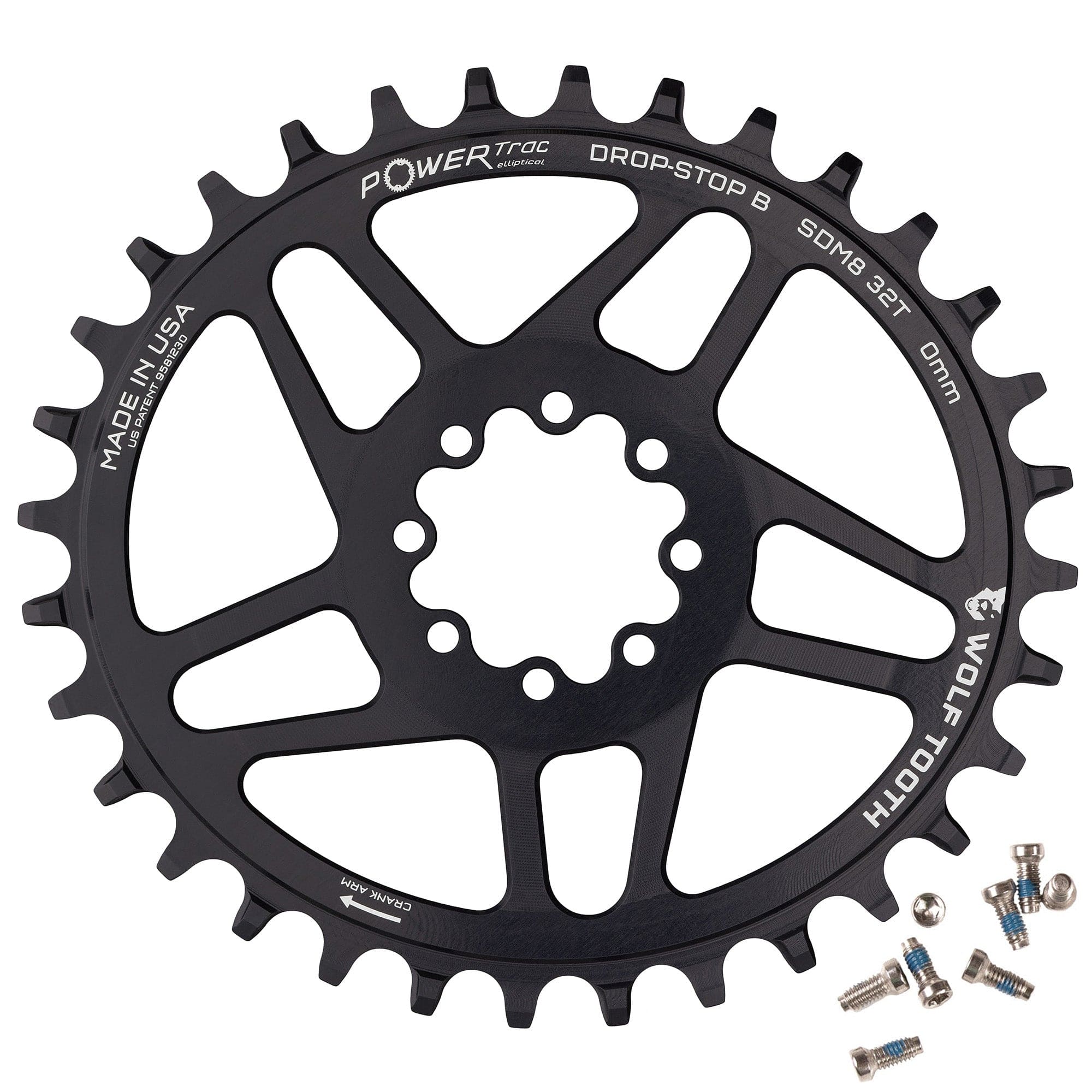How to find the correct chainring for your mountain bike with SRAM Transmission
You'll need to know your crankset model, drivetrain (Transmission or Eagle), and your bike's rear spacing. If you don't know how to find that information, we're here to walk you through it. Wolf Tooth has chainrings for T-Type and Eagle cranks to support any Transmission setup.
TL;DR
For most of you, these simple rules apply:
- SRAM Transmission cranks and 2025 Cane Creek eeWings cranks use an 8-Bolt direct mount 3mm offset chainring. For others that are upgrading to Transmission and want to reuse your old boost SRAM cranks or pre-2025 Cane Creek eeWings cranks, you will use a 3-bolt direct mount 0mm offset chainring or CAMO Spider.
- Riders running SRAM Transmission w/ Race Face Cinch cranksets with a Boost 136/137mm spindle use a Cinch direct mount 0mm offset chainring. Riders using a Cinch crankset with a Super Boost 151mm spindle use a Cinch direct mount 3mm offset chainring.
- A T-Type optimized Drop-Stop B Chainring is required to run the Flattop chain with your SRAM Transmission setup.
- SRAM Eagle DUB and DUB Super Boost 12-speed cranksets use a 3-Bolt direct mount 3mm offset chainring.
Where to begin?
So. You've got a new bike. It's kitted out w/ a new SRAM Transmission setup and are looking to change up your gearing, or prefer to run an oval chainring. Or, maybe you've got a UDH-equipped (Universal Derailleur Hanger) bike that's a few seasons old, and you'd like to get yourself the latest and greatest in shifting tech, but don't need a new crankset, and have no idea where to start when it comes to compatibility. We feel you, and we're here to cut through some of the technical speak to help you find exactly what you need to get you going!
For Starters:
Let's cover some of the verbiage we'll be using below, so you can use this as a reference if you see something you don't understand:
- UDH: Universal Derailleur Hanger. This is the new industry standard which replaced the hundreds upon hundreds of derailleur hanger options out there so that current and future model bikes could have one, universal, affordable option. Adoption of this standard also enabled SRAM to develop Transmission, since it mounts to the bike in place of UDH.
- Transmission: SRAM's new word for drivetrain. These are interchangeable terms, however we'll be using Transmission and T-Type to denote this newest shifting tech, since it comes with some changes when compared to other 11- and 12-speed drivetrains from SRAM and others.
- Offset + Chainline: Chainline is the distance between the center of your BB shell and the chainring. We will be talking about 52, 55, and 56.5mm chainline below. Offset is the dish of the chainring itself. 0mm is considered flat, while 3mm has 3mm of dish away from the crankset mount point. That dish is the offset. Chainline and offset are opposing numbers, with chainline measured positively in the outboard (away from the center of the bike) direction, and offset measured positively in the inboard (toward the center of the bike) direction.
- Hub Spacing: This conversation will be sticking to the dominant, and 2nd most popular option for rear hub spacing currently present in modern production MTBs. This is Boost (148mm rear hub spacing) and Super Boost (157mm rear hub spacing). What your bike has will be determined by manufacturer and model. Please reference your owner's manual or manufacturer website if you need to find out if your bike is Boost or Super Boost. We are going to refer to Super Boost also as SB+ going forward.
- Direct Mount: This refers to a chainring or chainring spider that mounts directly to the crankset. Wolf Tooth offers many different direct mount chainring options to fit all major crankset models, as well as our CAMO System in these same configurations, which also allow for easy chainring swap, or offset (and chainline) adjustment by swapping chainrings. For our purposes here, SRAM produces two different direct mount standards. 3-Bolt and 8-Bolt. DUB and DUB SB+, and Cane Creek eeWings cranksets feature a 3-Bolt direct mount interface.* DUB Wide cranksets feature an 8-Bolt direct mount interface.
Let's Get Rolling
Ok here we go. Now we're getting to the fun part. We'll walk through how to identify a few components and criteria so we can steer you toward finding the correct chainring to run with your setup.
- What crankset do I have? This is going to involve removing your SRAM crankset. The first think you're going to want to do is put your rear derailleur cage in the lock position, using the lock button behind your derailleur body. Once the cage is locked forward and there is no tension on the chain, remove the chain from your chainring. Next, you're going to need an 8mm hex wrench, which slots into the driveside crank arm. This bolt is torqued to a high Nm value, so you might need something for extra leverage if you're struggling to get it to release. Turn counter-clockwise and continue until the driveside crank arm and chainring are fully unthreaded from the crank spindle, remove your crank arm and set it on your workbench. From here, remove the non-driveside crank arm and spindle, these are bonded together and will come out together as one piece. Reference the images below and identify which of the three most common SRAM crank spindle lengths you have; DUB, DUB Wide, or DUB SB+ (Super Boost). If you have Cane Creek eeWings, chances are you know what you have. Make a mental note or write this down on some scratch paper, we'll need this info in a minute.
- What drivetrain do I have? This is a quicker one to figure out. This tech doc is 95% focused on 12-speed drivetrains, but if you have a modern boost (or Super Boost) bike w/ 11-speed, this doc will also apply to you. There are now two SRAM options in 12-speed. There is Eagle mechanical and AXS, which are 12-speed and use a standard 12-speed chain, and bolt onto your frame with a derailleur hanger (UDH or otherwise). There is also Transmission T-Type 12-speed, which is only compatible with a UDH-equipped bike, and is bolted directly to your frame, replacing the UDH. It also uses a special Flattop chain.
- What rear spacing is my bike? This can be accomplished two ways. The easiest way is to find your make and model of bike, and go to the manufacturer website and look up the spec or FAQ on that particular model to find the rear hub spacing. It will almost certainly (if you're here looking for this information) be Boost 148 or Super Boost 157. If you have a 142 spaced bike, unfortunately none of this tech doc will be applicable; sorry! The other option is to remove your rear wheel, and using a caliper, measure your rear hub width end to end on the outside of the hub end caps. These should measure to exactly 148 or 157mm, and from there you know if you have Boost or Super Boost.
Finding Your Chainring
Now we're able to get your chainring options sorted. The information below will help you find an appropriate chainring for your crankset, rear spacing, and drivetrain combination for a SRAM setup. Use this information if you're looking to upgrade to an optimized Made In USA chainring, want a different size than you're currently running, replace a worn-out chainring, or want to go for an Oval shape. Our Drop-Stop B tooth profile is compatible with all SRAM 11- and 12-speed setups, among others, and is optimized for the Flattop chain used by SRAM T-Type Transmission
Possible Configurations
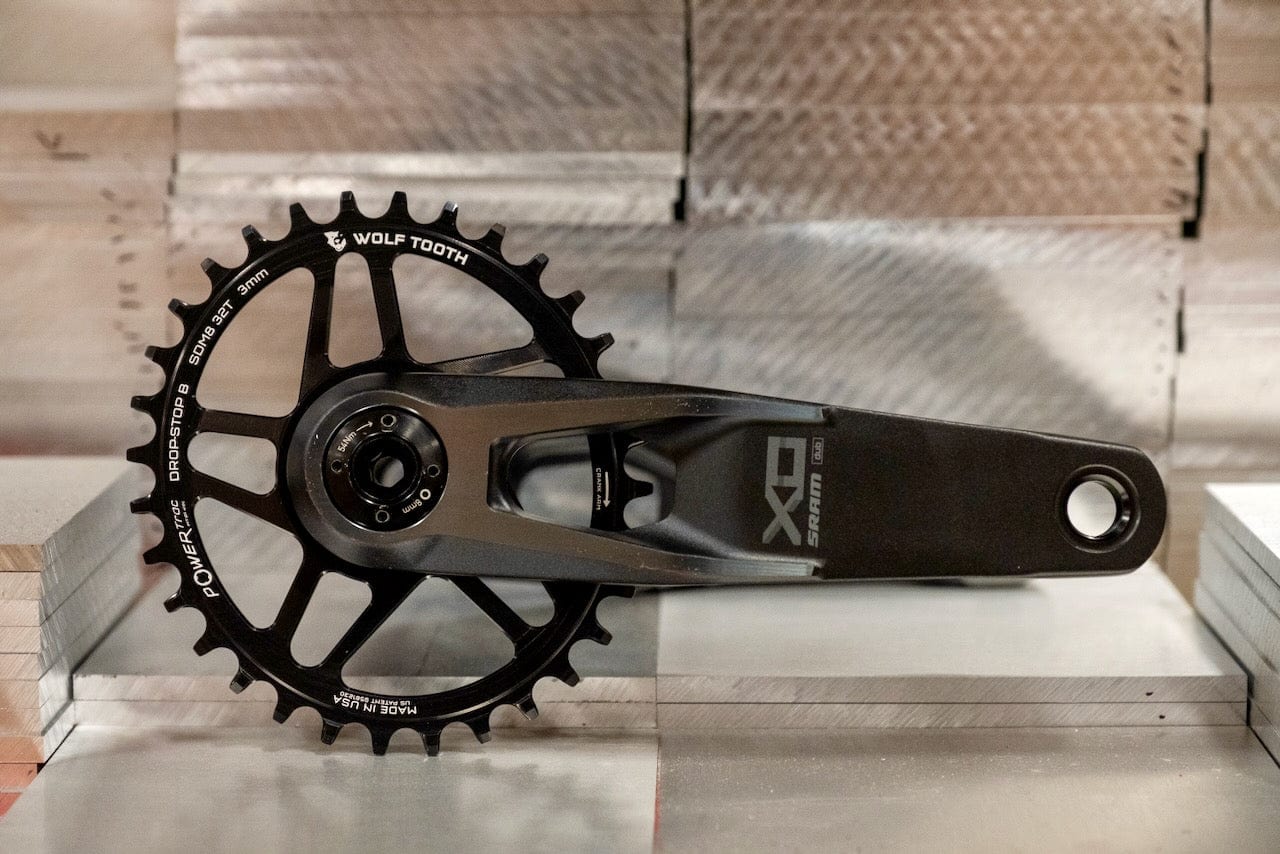
Full T-Type Setup
I have a complete SRAM Transmission setup, including a DUB Wide or 2025 Cane Creek eeWings crankset for a 55mm chainline: You need a 3mm offset 8-Bolt Direct Mount round or oval chainring. This setup is applicable for both 148 Boost bikes as well as 157 Super Boost bikes equipped with Transmission.
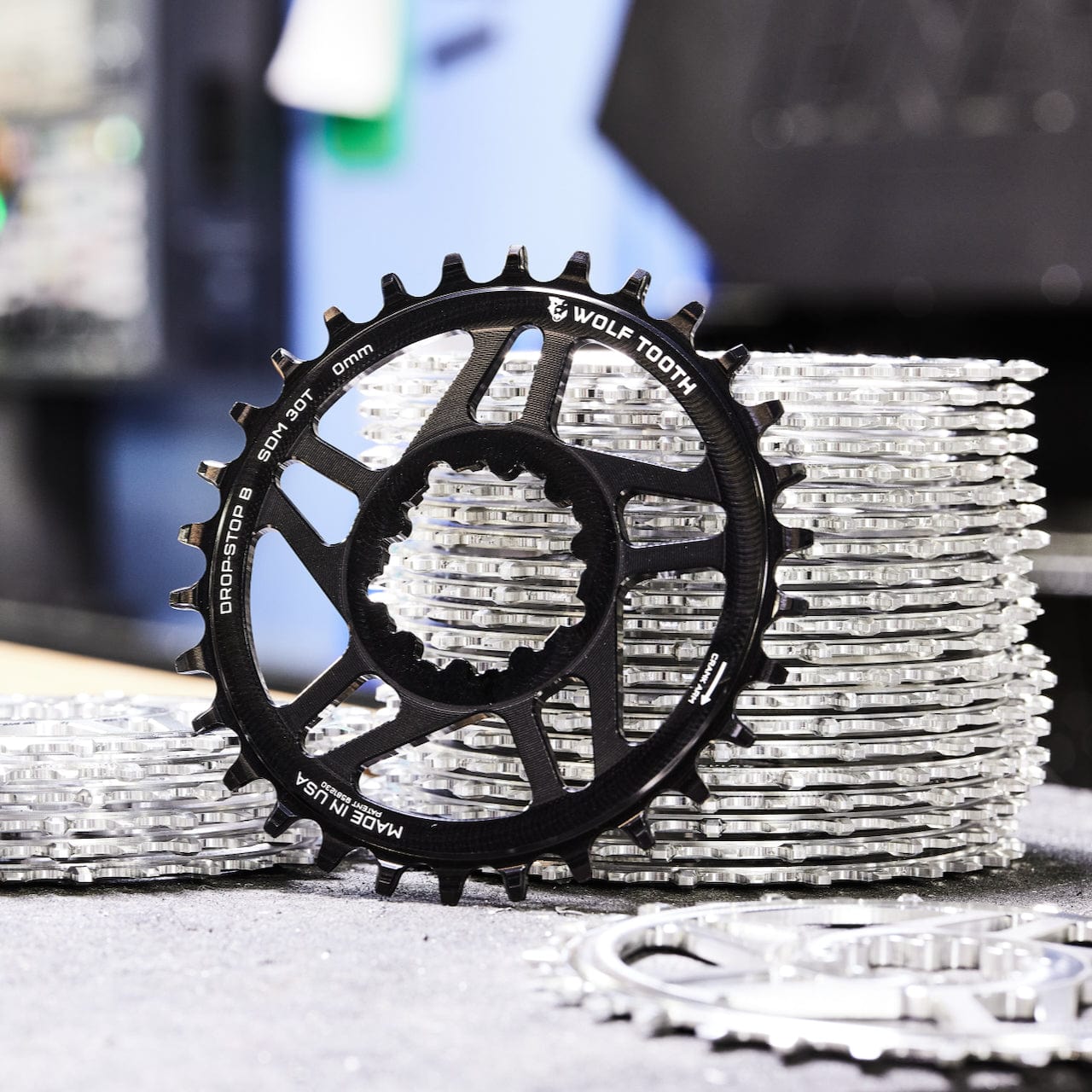
Boost T-Type with Old Crank
I have a 148 Boost bike, SRAM Transmission, and want to use my previous generation SRAM DUB or Cane Creek eeWings crankset. T-Type is built around a 55mm chainline, and your crankset was designed for a 52mm chainline with the stock chainring (3mm offset). This is where our 0mm offset chainrings come into play: You can use our CAMO system 0mm offset spider and a Drop-Stop B round or oval CAMO chainring OR you can use a 3-Bolt Direct Mount Drop-Stop B chainring with a 0mm offset.
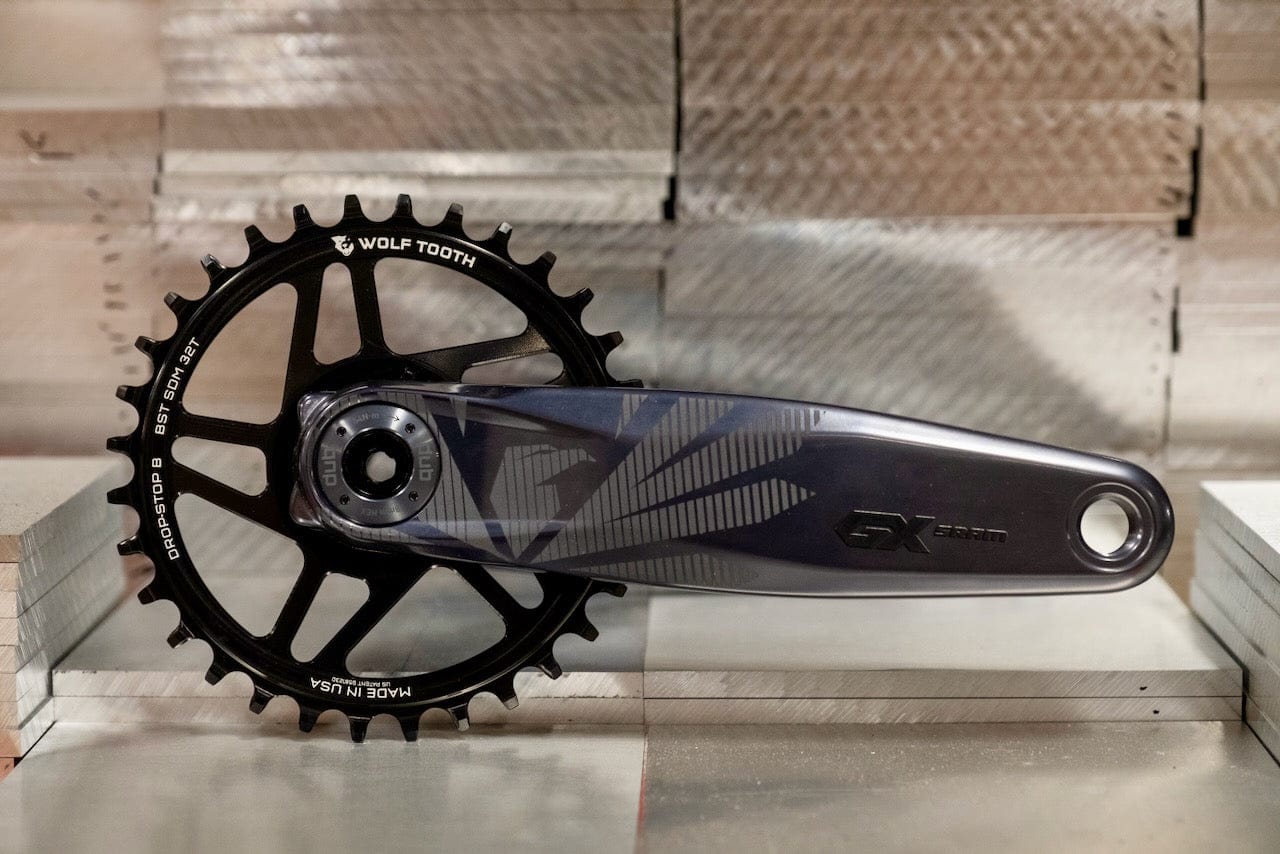
Boost w/o T-Type
I have a 148 Boost bike, SRAM Eagle mechanical or AXS drivetrain and DUB or Cane Creek eeWings crankset with a 52mm chainline: You have options! You can use our CAMO system 3mm offset 3-bolt spider and a Drop-Stop B round or oval CAMO chainring OR you can use a 3-Bolt Direct Mount Drop-Stop B chainring with a 3mm offset.
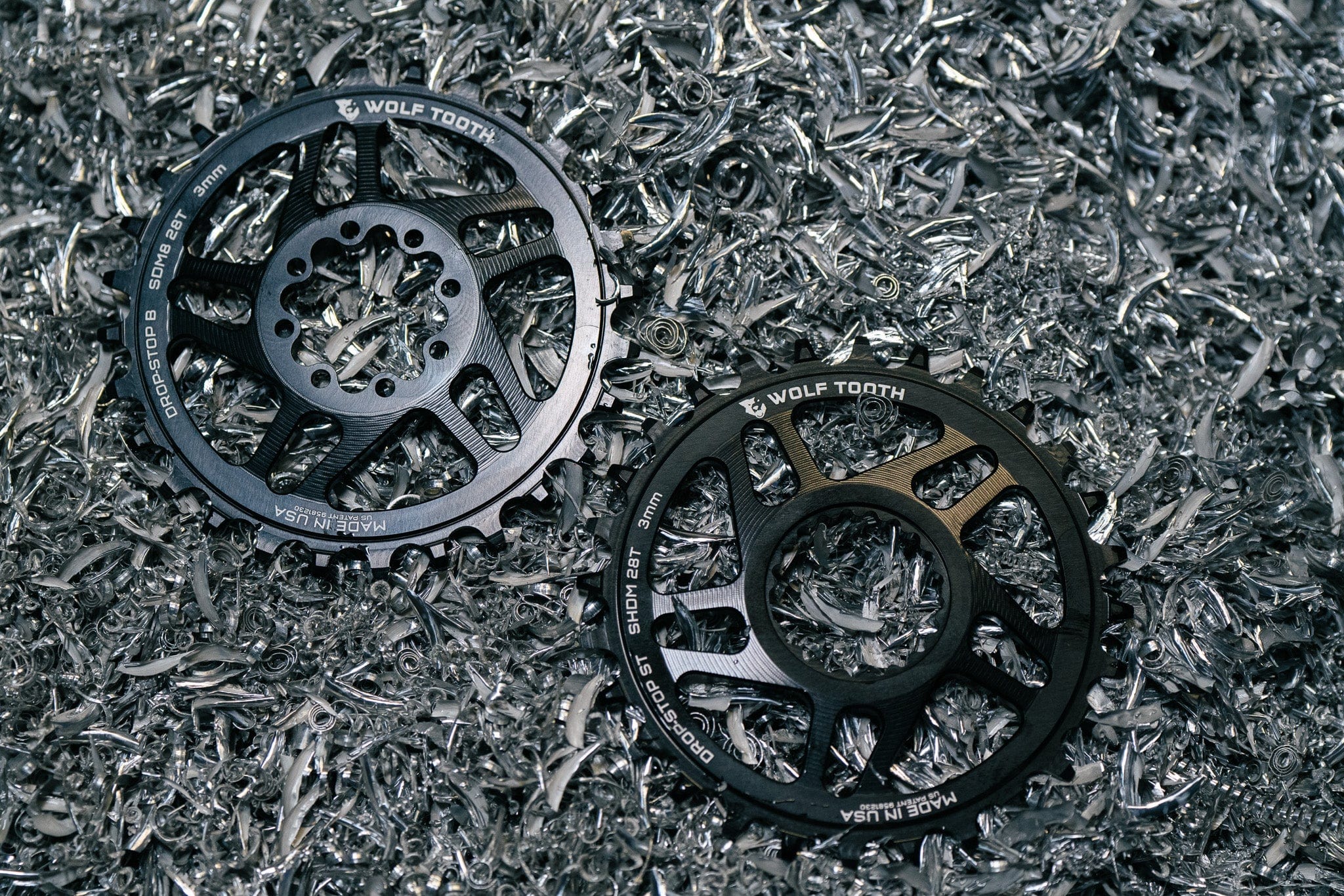
Super Boost T-Type Old Crank
I have a 157 Super Boost bike, a SRAM Transmission rear derailleur and T-Type chain with a 56.5mm chainline, and want to use my previous generation SRAM DUB SB+ crankset: You have options! You can use our CAMO system 3mm offset 3-bolt spider and a Drop-Stop B round or oval CAMO chainring OR you can use a 3-Bolt Direct Mount Drop-Stop B chainring with a 3mm offset.
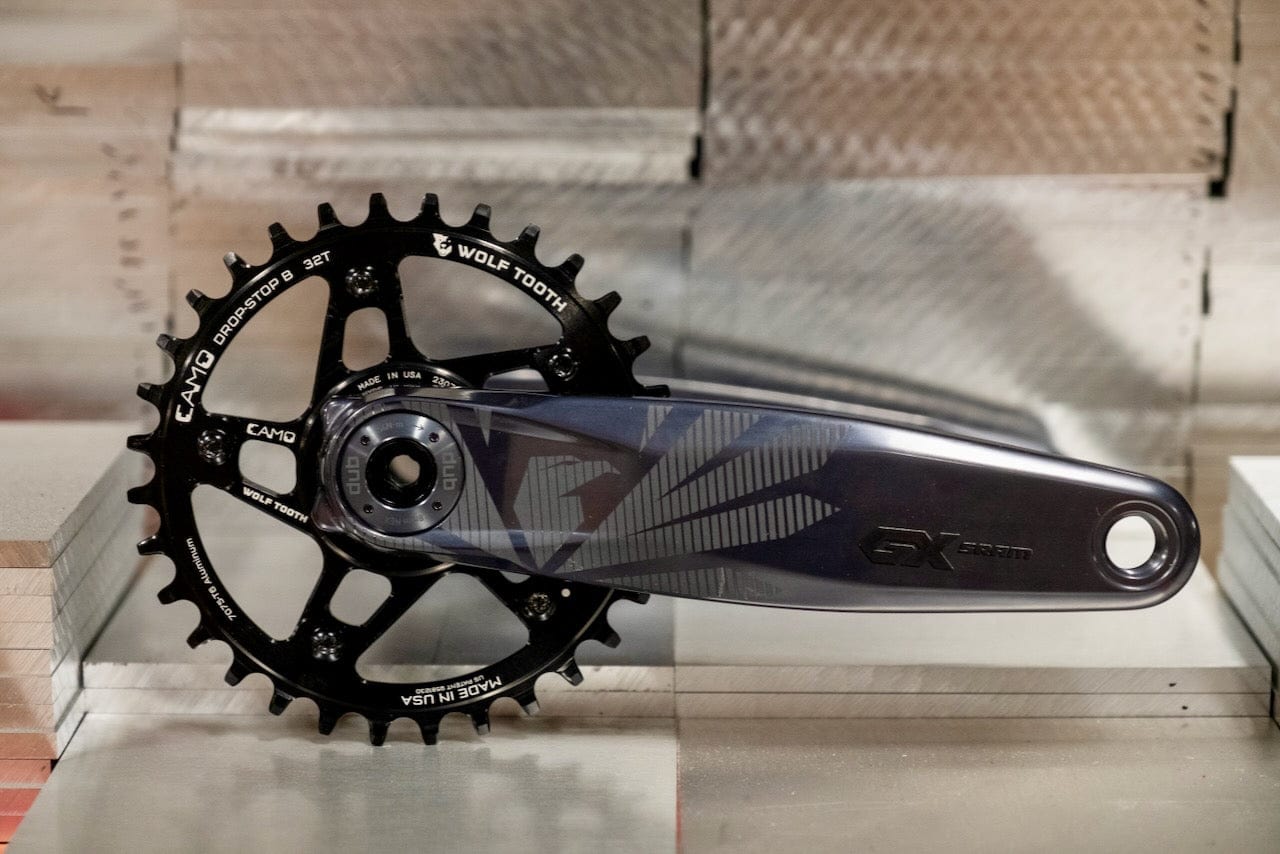
Super Boost w/o T-Type
I have a 157 Super Boost bike, Sram Eagle mechanical or AXS drivetrain and DUB SB+ crankset with a 56.5mm chainline: You have options! You can use our CAMO system 3mm offset 3-bolt spider and a Drop-Stop B round or oval CAMO chainring OR you can use a 3-Bolt Direct Mount Drop-Stop B chainring with a 3mm offset.
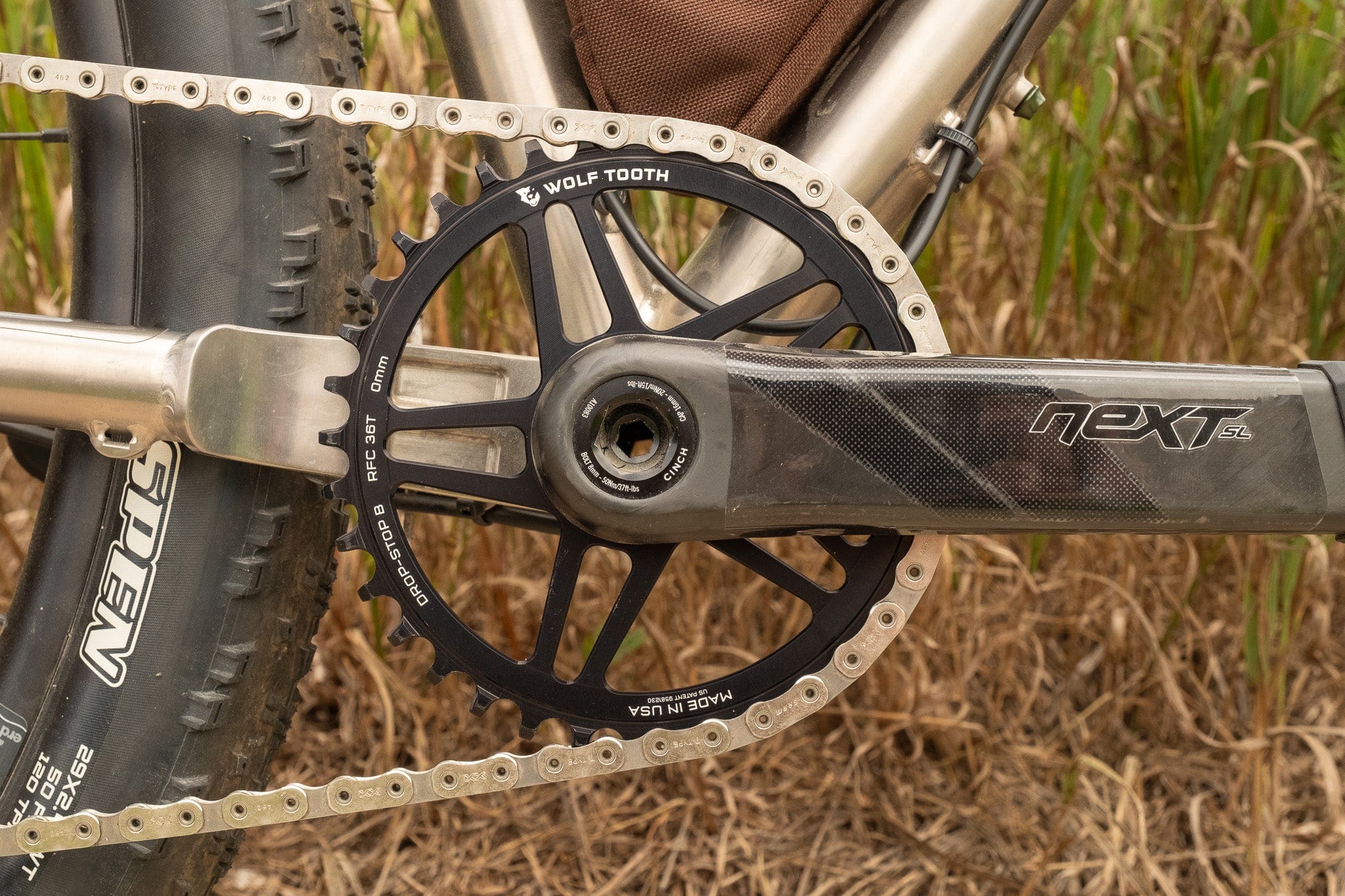
Raceface w/ T-Type
I have a 148 Boost bike, SRAM Transmission, and want to use my Raceface crankset. T-Type is built around a 55mm chainline, and your crankset was designed for a 52mm chainline with the stock chainring (3mm offset). This is where our 0mm offset chainrings come into play: You can use our CAMO system 0mm offset spider and a Drop-Stop B round or oval CAMO chainring OR you can use a Raceface Direct Mount Drop-Stop B chainring with a 0mm offset.
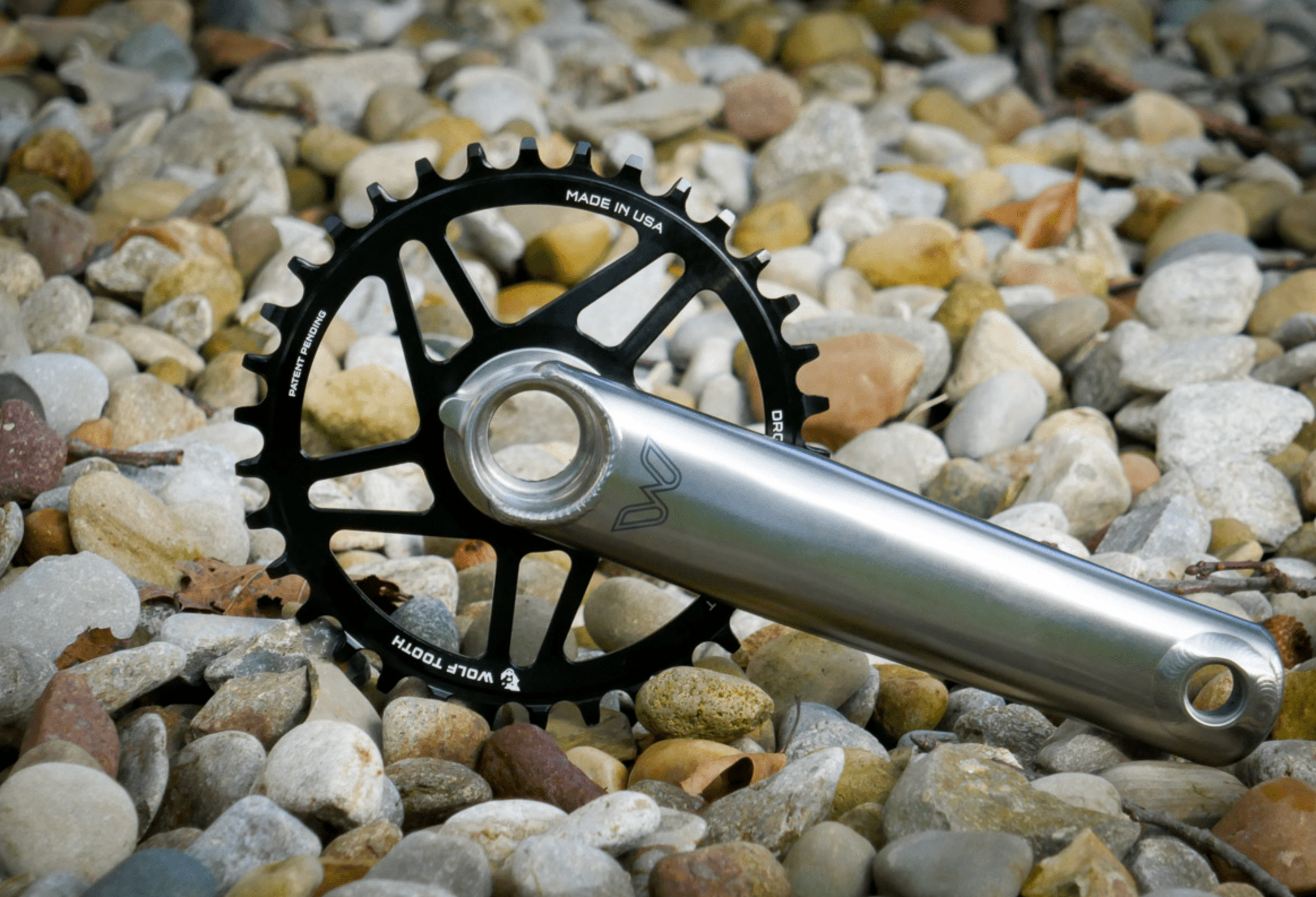
Pre-2025 eeWings w/ T-Type
I have a 148 Boost bike, SRAM Transmission, Cane Creek eeWings crankset. T-Type is built around a 55mm chainline, and your crankset was designed for a 52mm chainline with the stock chainring (3mm offset). This is where our 0mm offset chainrings come into play: You can use our CAMO system 0mm offset spider and a Drop-Stop B round or oval CAMO chainring OR you can use a 3-Bolt Direct Mount Drop-Stop B chainring with a 0mm offset.
*There are a few exceptions to the scenarios listed above:
- SRAM produces an XX1 DUB 8-Bolt crankset designed for their Quarq power meter spider and a 52mm chainline (Eagle mechanical and AXS). For Transmission and a 55mm chainline, you would need a 0mm offset 8-bolt direct mount Drop-Stop B chainring. For Eagle or AXS and a 52mm chainline, you can use an 8-Bolt 3mm offset Drop-Stop B chainring.
- SRAM also produces an XXSL Transmission crankset with a narrow Q factor (we didn't explain this term up above, but if you have this crankset, you know what that means!) which when used with Transmission needs a 0mm offset Drop-Stop B 8-bolt Direct Mount chainring.
- We do not currently offer a screw-mount chainring for the T-Type XXSL power meter crankset.
There ya go!
You're all set to get rolling with your new Transmission-equipped bike, or have a new chainring ready for your Eagle 12-speed mechanical or AXS groupset. Remember, you can also use ourCAMO System as an option for those who frequently change chainring sizes for racing. We also have options indirect mount round or oval shapesto suit riders with a preference for either pedaling feel. All Wolf Tooth chainrings are designed, tested, and machined in-house at our facility in Minnesota, USA.
Shop Chainrings Optimized for SRAM Transmission
Direct Mount Chainrings for SRAM 3-bolt Cranks
Oval Direct Mount Chainrings for SRAM 3-Bolt Mountain Cranks
Direct Mount Chainrings for Race Face Cinch
Oval Direct Mount Chainrings for Race Face Cinch

